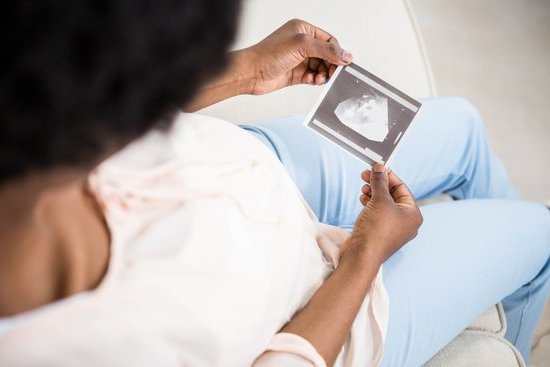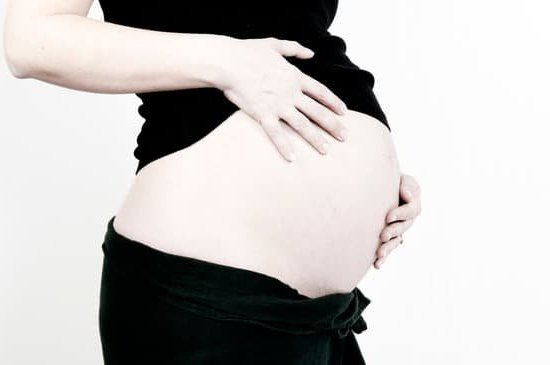Determining when to take a pregnancy test can be crucial in obtaining accurate results. By factoring in ovulation, individuals can maximize the chances of detecting a potential pregnancy at the right time. Ovulation plays a significant role in the menstrual cycle and understanding its timing is key in predicting the best time for testing.
The menstrual cycle, which typically lasts about 28 days, involves various hormonal changes that lead to ovulation – the release of an egg from the ovary. Ovulation usually occurs around the midpoint of the cycle and marks the fertile window for conception. By tracking ovulation, individuals can identify their most fertile days and plan for pregnancy testing accordingly.
Recognizing the importance of ovulation in conception is crucial when considering when to take a pregnancy test. Ovulation serves as a reliable indicator of fertility, helping individuals pinpoint the optimal time for testing. By utilizing a pregnancy test calculator based on ovulation, one can determine the ideal timeframe to ensure accurate results and avoid potential false negatives.
Understanding the Menstrual Cycle and Ovulation
When it comes to understanding the menstrual cycle and ovulation, knowledge is power for individuals who are trying to conceive or avoid pregnancy. The menstrual cycle typically lasts between 28 to 32 days, with ovulation occurring around the middle of the cycle. Ovulation is the process where an egg is released from the ovary and is available for fertilization by sperm. This fertile window usually lasts around 6 days, including the day of ovulation itself.
Understanding when you ovulate is crucial for determining the best time to take a pregnancy test. The luteinizing hormone (LH) surge that triggers ovulation can be detected in urine, which is why many ovulation predictor kits (OPKs) rely on detecting this surge to predict when ovulation will occur. By tracking your menstrual cycle and using an OPK, you can better estimate when you are most likely to ovulate and subsequently determine when to take a pregnancy test for accurate results.
In addition to using an OPK, another way to pinpoint your fertile window and determine when to take a pregnancy test calculator based on ovulation is by tracking basal body temperature (BBT). Your BBT rises slightly after ovulation due to hormonal changes, making it another useful tool for predicting fertility.
By combining these methods and utilizing a pregnancy test calculator that takes into account both your average cycle length and the length of your luteal phase post-ovulation, you can increase your chances of accurately detecting a potential pregnancy at home.
| Method | Accuracy |
|---|---|
| Ovulation Predictor Kits (OPKs) | High |
| Basal Body Temperature Tracking | Moderate |
Importance of Ovulation in Pregnancy
Ovulation plays a crucial role in the process of conception, making it an essential factor to consider when trying to get pregnant. Understanding the timing of ovulation can significantly increase the chances of successful fertilization and pregnancy. Ovulation typically occurs around the middle of a woman’s menstrual cycle, when a mature egg is released from the ovary and travels down the fallopian tube, ready to be fertilized by sperm.
It is during this period of ovulation that a woman is most fertile, with the highest likelihood of becoming pregnant. Tracking ovulation can help determine the best time to engage in sexual activity for conception. By pinpointing this key window of fertility, couples can optimize their chances of getting pregnant naturally. Additionally, knowing when ovulation occurs is vital for accurate timing when taking a pregnancy test.
When considering when to take a pregnancy test calculator based on ovulation, it’s important to keep in mind that testing too early can result in false negatives due to low levels of hCG hormone in the body. The best time to take a pregnancy test after ovulation is usually about 7-10 days post-ovulation, as this allows for enough time for hCG levels to rise and be detected accurately by the test.
Utilizing resources such as online calculators can help individuals determine the ideal timeframe for testing based on their unique ovulation cycle.
How Ovulation Predicts the Best Time to Take a Pregnancy Test
Ovulation is a crucial part of a woman’s menstrual cycle, marking the release of an egg from the ovaries. Understanding when you ovulate can be essential when trying to conceive or determining the best time to take a pregnancy test.
Ovulation typically occurs around 14 days before the start of your next period, but it can vary depending on the length and regularity of your cycle. This is where using a pregnancy test calculator based on ovulation can come in handy.
When to take a pregnancy test calculator based on ovulation takes into account the timing of ovulation to predict the most accurate window for testing. By tracking your ovulation cycle and understanding when you are most fertile, you can optimize your chances of detecting a possible pregnancy early on.
This information is vital as taking a pregnancy test too early may result in false negatives due to low levels of hCG (human chorionic gonadotropin) hormone – a hormone produced during pregnancy that the test detects.
To determine the best time for taking a pregnancy test using a calculator based on ovulation, consider factors such as the length of your menstrual cycle, the day you ovulate, and the sensitivity of the pregnancy test you plan to use. Here is a step-by-step guide on how to use this calculator effectively:
- 1. Track your menstrual cycle to pinpoint when you expect to ovulate.
- 2. Use an ovulation predictor kit or monitor changes in cervical mucus and basal body temperature to confirm ovulation.
- 3. Once you have determined your ovulation day, plug this information into the pregnancy test calculator.
By following these steps and considering all relevant factors when using a pregnancy test calculator based on ovulation, you can increase your chances of obtaining accurate results and avoiding unnecessary stress or confusion in your journey towards conception.
Overview of Pregnancy Test Types and How They Work
When it comes to determining pregnancy, there are various types of pregnancy tests available in the market. Understanding how these tests work can help individuals choose the most suitable option for their needs. The two main types of pregnancy tests are urine-based and blood-based tests.
Urine-based pregnancy tests are the most commonly used and can be easily done at home. These tests detect a hormone called human chorionic gonadotropin (hCG) in the urine, which is produced when a fertilized egg implants in the uterus. On the other hand, blood-based tests can detect lower levels of hCG earlier than urine-based tests and are often conducted in clinics or hospitals.
How Pregnancy Tests Work
Both urine-based and blood-based pregnancy tests work by detecting the presence of hCG in the body. When a woman becomes pregnant, her body starts producing hCG, which can be detected through these tests. While urine-based tests provide results within minutes, blood-based tests may take longer as they need to be analyzed in a laboratory setting.
When to Choose Each Type of Test
The choice between urine-based and blood-based pregnancy tests often depends on personal preferences and specific circumstances. Urine-based tests are convenient, affordable, and readily available at pharmacies, making them a popular choice for many women.
On the other hand, blood-based tests may be recommended by healthcare providers for early detection or if there are concerns about the accuracy of urine-based test results. Consulting with a healthcare provider can help individuals determine which type of test is most suitable for their situation.
Using a Pregnancy Test Calculator to Determine the Best Time for Testing
Determining the best time to take a pregnancy test can be crucial in achieving accurate results. One way to pinpoint this timing is by using a pregnancy test calculator based on ovulation. These calculators take into account the length of your menstrual cycle, the average duration of your luteal phase, and the date of ovulation to provide an estimate of when you should test for pregnancy.
Using a pregnancy test calculator can help you avoid testing too early, which may result in false negative results due to low levels of the pregnancy hormone hCG that may not be detectable yet. On the other hand, testing too late can also lead to inaccurate results as hCG levels may start dropping later in pregnancy. By accurately predicting the optimal time for testing, you increase your chances of obtaining reliable results.
When using a pregnancy test calculator, it’s important to input accurate information about your menstrual cycle and ovulation date. This will ensure that the calculator provides you with an appropriate timeframe for testing. Additionally, factors such as irregular cycles or fertility treatments may affect the accuracy of the calculated timing, so it’s essential to consider these variables as well.
Factors to Consider When Using a Pregnancy Test Calculator
When considering using a pregnancy test calculator based on ovulation, there are several key factors to keep in mind. One important factor is the length of your menstrual cycle, as this will affect when you ovulate.
Ovulation typically occurs around 14 days before the start of your next period, so knowing the length of your cycle can help pinpoint the best time to take a pregnancy test. Additionally, understanding the typical signs and symptoms of ovulation, such as changes in cervical mucus or basal body temperature, can also aid in determining when to test.
Another factor to consider is the sensitivity of the pregnancy test you plan to use. Some tests are designed to detect lower levels of hCG (the hormone produced during pregnancy) earlier than others. If you decide to test early, choosing a highly sensitive test may provide more accurate results. It’s also essential to follow the instructions carefully when taking a pregnancy test, as improper use can lead to inaccurate results.
Additionally, lifestyle factors can play a role in the accuracy of a pregnancy test. Factors such as stress levels, diet, and exercise routine can impact hormone levels and potentially affect the results of a test.
Keeping track of these lifestyle factors along with using a pregnancy test calculator based on ovulation can provide more reliable results. By considering these various factors, you can optimize your chances of obtaining an accurate result and reduce any uncertainty surrounding when to take a pregnancy test.
| Factors to Consider | Details |
|---|---|
| Menstrual Cycle Length | Helps determine timing for ovulation and best time for testing |
| Pregnancy Test Sensitivity | Choosing a highly sensitive test for early detection |
| Lifestyle Factors | Including stress levels, diet, and exercise in consideration for accurate results |
Step-by-Step Guide on How to Use a Pregnancy Test Calculator Based on Ovulation
Ovulation plays a crucial role in determining the best time to take a pregnancy test. By understanding and tracking your menstrual cycle, you can pinpoint when ovulation occurs, which then helps you calculate the most accurate time to confirm a potential pregnancy. Using a pregnancy test calculator based on ovulation can provide valuable insights into when your body is most fertile and likely to yield an accurate result.
To start using a pregnancy test calculator based on ovulation, you first need to determine the length of your menstrual cycle. This is calculated from the first day of your period to the first day of your next period. Knowing your typical cycle length will aid in predicting when ovulation is likely to occur. Once you have this information, you can input it into the calculator along with the date of your last period to estimate your ovulation window.
Next, it’s important to track any signs of ovulation, such as changes in cervical mucus or basal body temperature. These indicators can help confirm that ovulation is approaching or has already occurred, further narrowing down the ideal timeframe for taking a pregnancy test. By combining these physical cues with the data provided by the pregnancy test calculator, you can increase the accuracy of your testing and avoid unnecessary stress or disappointment.
Common Mistakes to Avoid When Using a Pregnancy Test Calculator
When it comes to using a pregnancy test calculator based on ovulation, there are several common mistakes that you should avoid in order to ensure accurate results. One of the most common mistakes is not understanding your menstrual cycle and ovulation patterns. If you miscalculate your ovulation date, it can lead to incorrect timing for taking a pregnancy test, resulting in a false negative or false positive result.
Another mistake to avoid is relying solely on the predicted ovulation date provided by the calculator. While these calculations can be helpful, they are not foolproof and may not always accurately predict when ovulation will occur. It’s important to pay attention to your body’s physical signs of ovulation, such as changes in cervical mucus or basal body temperature, in addition to using the calculator.
Additionally, some women make the mistake of testing too early after suspected ovulation. It’s important to wait until at least 10-14 days after ovulation before taking a pregnancy test, as testing too early can result in a false negative due to low levels of hCG hormone in your urine.
By avoiding these common mistakes and following the instructions provided by the pregnancy test calculator carefully, you can increase the accuracy of your results and reduce the likelihood of confusion or disappointment.
Conclusion
In conclusion, the timing of when to take a pregnancy test can significantly impact its accuracy. Understanding ovulation and the menstrual cycle is crucial in determining the best time to test for pregnancy. Ovulation plays a key role in fertility, as it is during this period that conception is most likely to occur. By tracking ovulation and using a pregnancy test calculator based on this information, individuals can increase the chances of detecting a pregnancy at the right moment.
Moreover, knowing how different types of pregnancy tests work can aid in selecting the most suitable one for testing. Whether it’s a urine-based test or a blood test, each type has its own sensitivity level and detection time frame. By following a step-by-step guide on how to use a pregnancy test calculator based on ovulation, individuals can maximize the accuracy of their results and minimize any potential errors.
It is essential to consider various factors when utilizing a pregnancy test calculator, such as the length of one’s menstrual cycle and the regularity of ovulation. Additionally, avoiding common mistakes, like testing too early or too late in the cycle, can also ensure more reliable results. Ultimately, proper timing in taking a pregnancy test based on ovulation not only increases accuracy but also helps individuals better understand their reproductive health and fertility patterns.
Frequently Asked Questions
How Many Days After Ovulation Should I Get a Positive Pregnancy Test?
A positive pregnancy test can typically be detected about 10-14 days after ovulation. This timing allows for the hCG hormone to build up in your system and be detected by the test. Testing too early may result in a false negative.
How Early Can Ovulation Test Detect Pregnancy?
Ovulation tests are not designed to detect pregnancy, as they measure luteinizing hormone (LH) surge that occurs right before ovulation. However, some women use ovulation tests as pregnancy tests due to similarities in the hormones detected. Pregnancy can sometimes be detected early on these tests, but it’s best to use a proper pregnancy test for accuracy.
How Soon Will a Pregnancy Test Read Positive?
A pregnancy test can read positive as early as 7-10 days after conception, though waiting until after you miss your period is recommended for the most accurate results. Factors like implantation timing and hCG levels play a role in when a pregnancy test will show a positive result.

Welcome to my fertility blog. This is a space where I will be sharing my experiences as I navigate through the world of fertility treatments, as well as provide information and resources about fertility and pregnancy.





